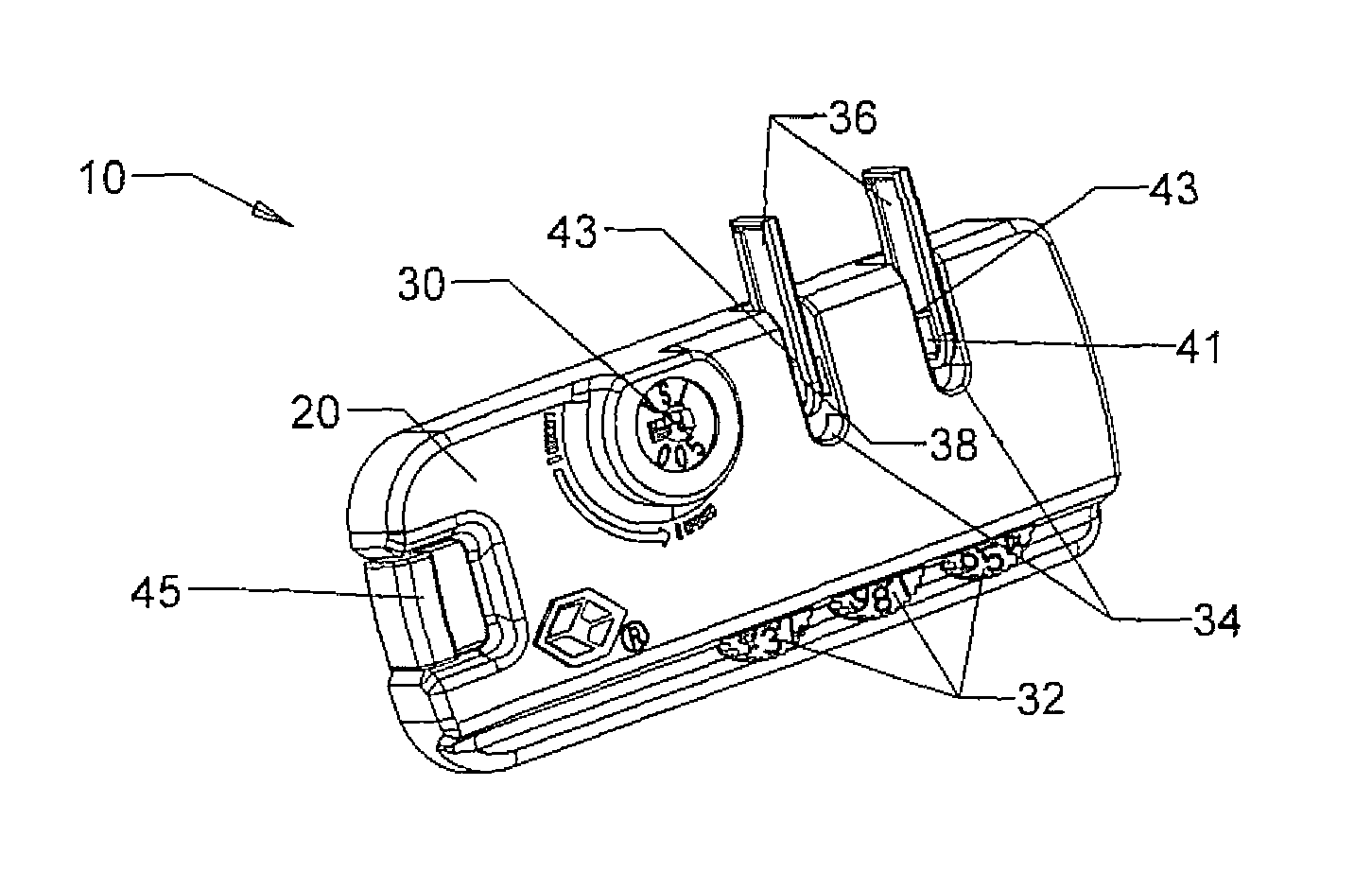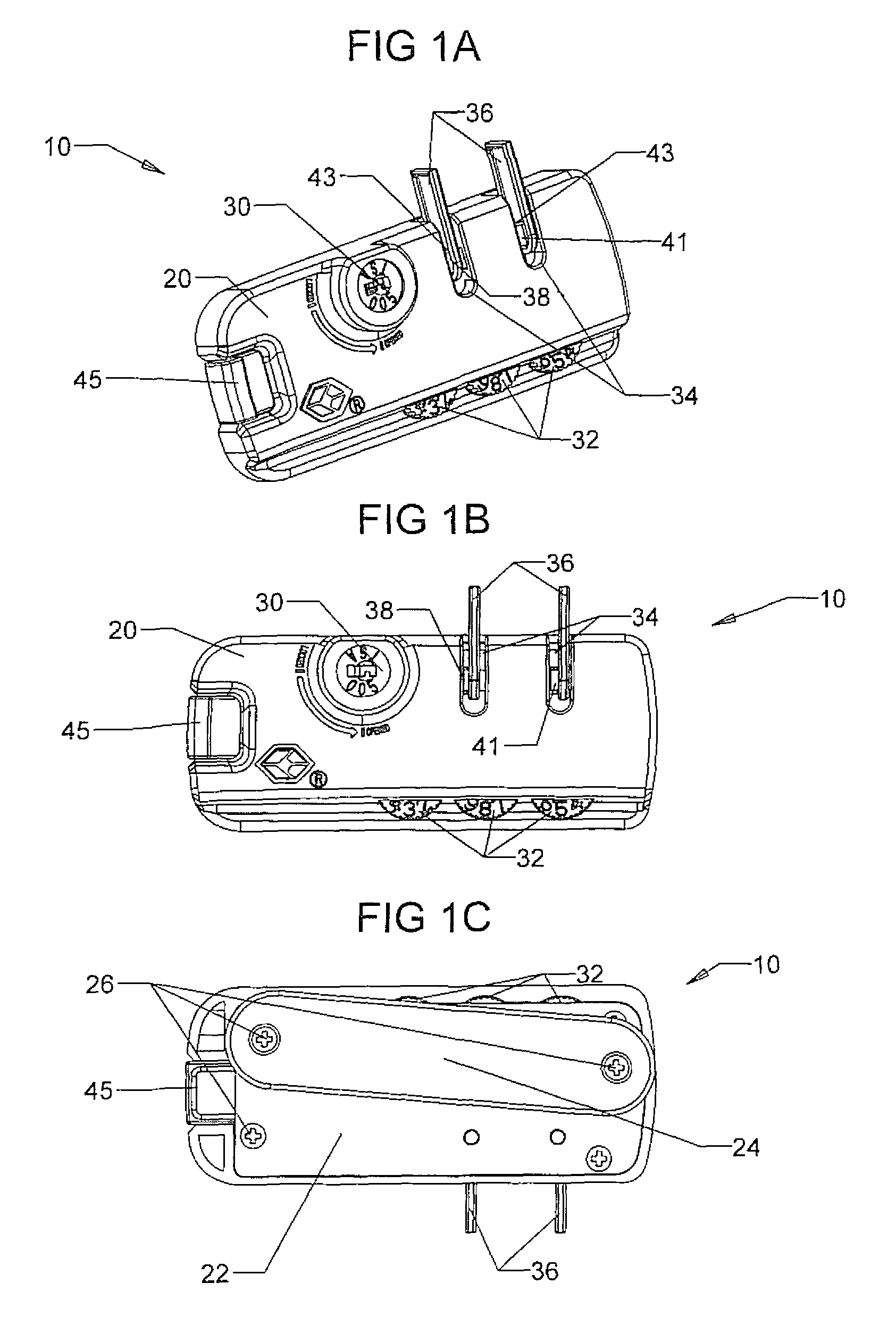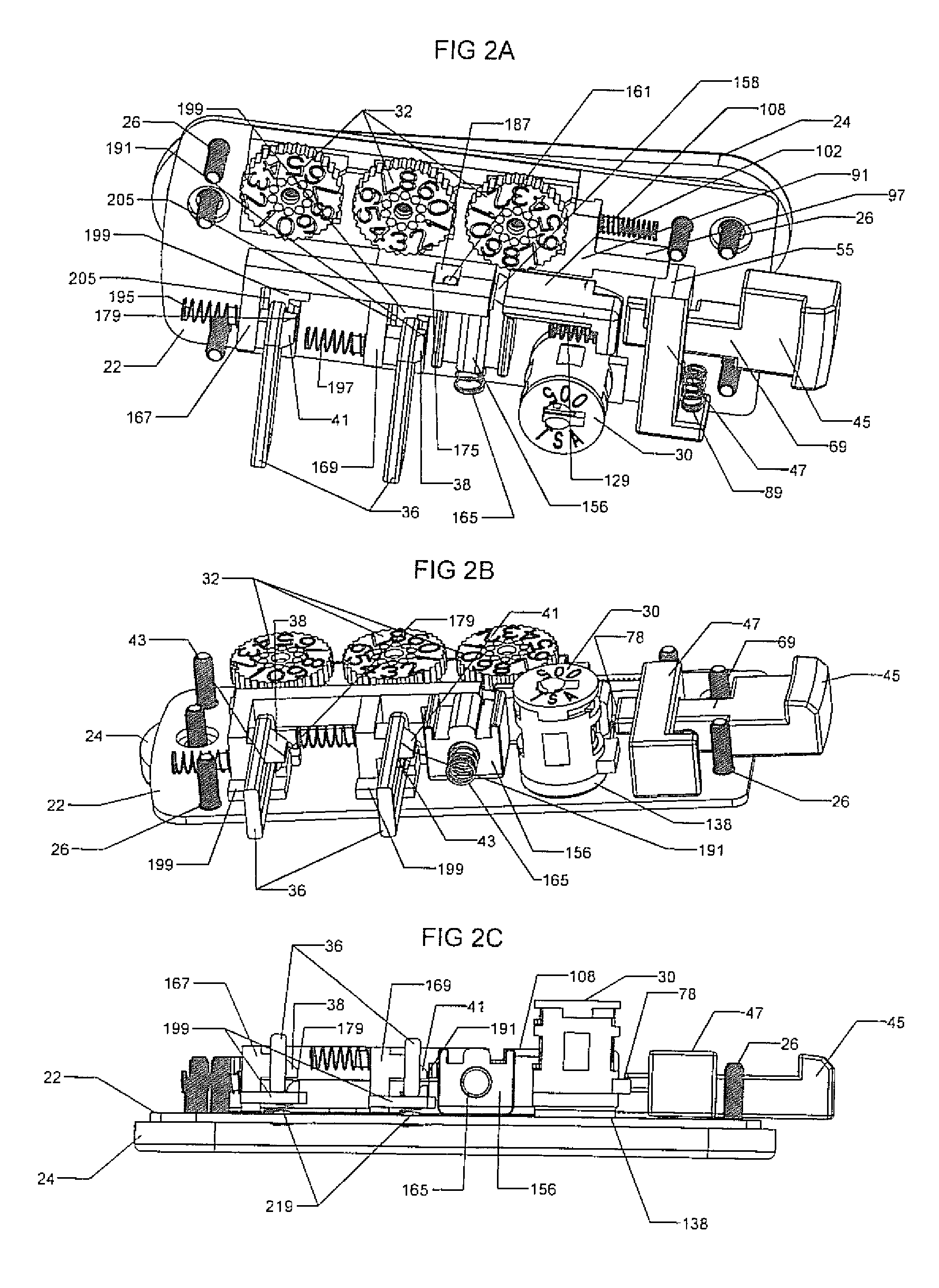Dual locking system for integrated zipper lock
a zipper lock and locking system technology, applied in the field of zipper locks, can solve problems such as the inability to move the latch
- Summary
- Abstract
- Description
- Claims
- Application Information
AI Technical Summary
Benefits of technology
Problems solved by technology
Method used
Image
Examples
Embodiment Construction
[0082]The present invention now will be described more fully hereinafter with reference to the accompanying figures, in which exemplary embodiments of the invention are shown. The invention may, however, be embodied in many different forms and should not be construed as limited to the embodiments set forth herein. Like reference numerals refer to like elements throughout.
[0083]Referring first to FIGS. 1A-1C, therein illustrated is an exemplary zipper lock generally indicated by the numeral 10 of the present invention. The zipper lock 10 includes a body 20 and a backing plate 22 that together form a housing / cover for the internal components of the zipper lock 10 that will be discussed further below. The zipper lock 10 also includes a back cover 24 that also forms part of the housing / cover for the internal components of the zipper lock 10. The backing plate 22, back cover 24 and body 20 may be affixed together by one or more fasteners 26, and the fasteners 26 may be such that they can...
PUM
 Login to View More
Login to View More Abstract
Description
Claims
Application Information
 Login to View More
Login to View More - R&D
- Intellectual Property
- Life Sciences
- Materials
- Tech Scout
- Unparalleled Data Quality
- Higher Quality Content
- 60% Fewer Hallucinations
Browse by: Latest US Patents, China's latest patents, Technical Efficacy Thesaurus, Application Domain, Technology Topic, Popular Technical Reports.
© 2025 PatSnap. All rights reserved.Legal|Privacy policy|Modern Slavery Act Transparency Statement|Sitemap|About US| Contact US: help@patsnap.com



